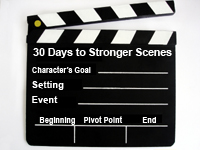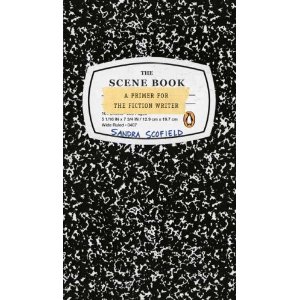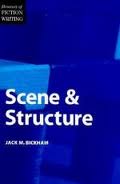30 Days to a Stronger Scene
What has the most potential for improving your writing? Learning to write a strong scene; then making sure every scene in your story is strong. Because it’s so important, we’ll spend the next 30 days breaking down scenes and trying to write the strongest possible.
 30 Days to a Stronger Scene Table of Contents
30 Days to a Stronger Scene Table of Contents
What is a scene?
It is a self-contained unit of action within a story, novel, or script.
The action has a beginning, middle and end; it consists of external actions, thought and emotions of characters. A character has an underlying goal or need and s/he tries to achieve that goal; complications and obstacles prevent the character from reaching the goal and the scene ends in a disaster.
Why write in scenes?
Because it’s easier to build tension, write tight and stay focused when writing in scenes. Using a scene means everything in that section of the story is focused on the character’s current goal; all obstacles relate to that goal; the disaster increases tension and puts the character in even hotter water. The result is that readers stay tuned.
How do I know if I write in scenes?
The Box Test. One test to see if you write in scenes is to literally mark one your manuscript, drawing a box around the scene. It may cover several pages, but you can box it out. The scene structure may be loose and not fully developed, but within that box, there should be some sense of movement toward a goal.
If you’re used to writing scripts, scenes in a novel work a little bit different. For scripts, scenes are mandatory and a new scene starts any time the location changes: for example, if a character is outside a house and walks inside. Scenes in scripts tend to be short. For a novel, a scene can extend longer and cover several minor changes of setting. So, if you’re used to writing scripts, instead think of scene sequences, or a series of scenes that cover a distinct goal of a character.
Is writing in scenes easy to learn?
Yes. The basics are simple. The nuances are as easy and as hard as any other story writing skills.
What will 30 Days to a Stronger Scene cover?
Everything you ever wanted to know about scenes. And then some. Stay tuned.
Want more immediately? Here are two great resources.

Sandra Scofield’s book is an excellent primer for writing scenes. Her examples are drawn mostly from the literary genre, rather than popular noves, so I find them hard to slog through sometimes. But everything else in her book is excellent. This classic by Jack Bickham gives the lowdown on scenes in detail. It’s a gem.
This classic by Jack Bickham gives the lowdown on scenes in detail. It’s a gem.
I’ve heard Scene & Structure is good but haven’t read it yet. I’ll have to soon. Susan Chang recommended Making a Good Script Great by Linda Seger. I just reserved it at the library.
I’m hoping your month long blog posts and these books will help me strengthen my stories. Great idea.
I like Linda Seger’s character book, too. She has lots of good ideas.
Darcy
I’m with you! Looking forward to great advice and practice in scene writing.